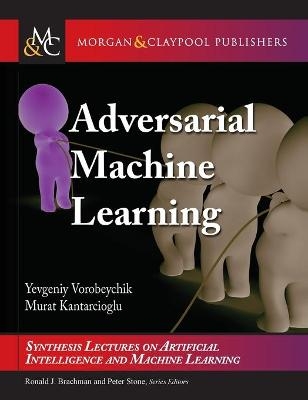
Adversarial Machine Learning
Morgan & Claypool Publishers (Verlag)
978-1-68173-397-5 (ISBN)
- Lieferbar
- Versandkostenfrei
- Auch auf Rechnung
- Artikel merken
This is a technical overview of the field of adversarial machine learning which has emerged to study vulnerabilities of machine learning approaches in adversarial settings and to develop techniques to make learning robust to adversarial manipulation.
After reviewing machine learning concepts and approaches, as well as common use cases of these in adversarial settings, we present a general categorization of attacks on machine learning. We then address two major categories of attacks and associated defenses: decision-time attacks, in which an adversary changes the nature of instances seen by a learned model at the time of prediction in order to cause errors, and poisoning or training time attacks, in which the actual training dataset is maliciously modified. In our final chapter devoted to technical content, we discuss recent techniques for attacks on deep learning, as well as approaches for improving robustness of deep neural networks. We conclude with a discussion of several important issues in the area of adversarial learning that in our view warrant further research.
The increasing abundance of large high-quality datasets, combined with significant technical advances over the last several decades have made machine learning into a major tool employed across a broad array of tasks including vision, language, finance, and security. However, success has been accompanied with important new challenges: many applications of machine learning are adversarial in nature. Some are adversarial because they are safety critical, such as autonomous driving. An adversary in these applications can be a malicious party aimed at causing congestion or accidents, or may even model unusual situations that expose vulnerabilities in the prediction engine. Other applications are adversarial because their task and/or the data they use are. For example, an important class of problems in security involves detection, such as malware, spam, and intrusion detection. The use of machine learning for detecting malicious entities creates an incentive among adversaries to evade detection by changing their behavior or the content of malicious objects they develop.
Given the increasing interest in the area of adversarial machine learning, we hope this book provides readers with the tools necessary to successfully engage in research and practice of machine learning in adversarial settings.
Yevgeniy Vorobeychik is an Assistant Professor of Computer Science, Computer Engineering, and Biomedical Informatics at Vanderbilt University. Previously, he was a Principal Research Scientist at Sandia National Laboratories. Between 2008 and 2010, he was a post doctoral research associate at the University of Pennsylvania Computer and Information Science department. He received Ph.D. (2008) and M.S.E. (2004) degrees in Computer Science and Engineering from the University of Michigan, and a B.S. degree in Computer Engineering from Northwestern University. His work focuses on game theoretic modeling of security and privacy, adversarial machine learning, algorithmic and behavioral game theory and incentive design, optimization, agent-based modeling, complex systems, network science, and epidemic control. Dr. Vorobeychik received an NSF CAREER award in 2017, and was invited to give an IJCAI-16 early career spotlight talk. He was nominated for the 2008 ACM Doctoral Dissertation Award and received honorable mention for the 2008 IFAAMAS Distinguished Dissertation Award.
List of Figures
Preface
Acknowledgments
Introduction
Machine Learning Preliminaries
Categories of Attacks on Machine Learning
Attacks at Decision Time
Defending Against Decision-Time Attacks
Data Poisoning Attacks
Defending Against Data Poisoning
Attacking and Defending Deep Learning
The Road Ahead
Bibliography
Authors' Biographies
Index
| Erscheinungsdatum | 04.09.2018 |
|---|---|
| Reihe/Serie | Synthesis Lectures on Artificial Intelligence and Machine Learning |
| Verlagsort | San Rafael |
| Sprache | englisch |
| Maße | 191 x 235 mm |
| Gewicht | 520 g |
| Themenwelt | Informatik ► Netzwerke ► Sicherheit / Firewall |
| Informatik ► Theorie / Studium ► Künstliche Intelligenz / Robotik | |
| Mathematik / Informatik ► Mathematik ► Angewandte Mathematik | |
| Mathematik / Informatik ► Mathematik ► Finanz- / Wirtschaftsmathematik | |
| ISBN-10 | 1-68173-397-8 / 1681733978 |
| ISBN-13 | 978-1-68173-397-5 / 9781681733975 |
| Zustand | Neuware |
| Haben Sie eine Frage zum Produkt? |
aus dem Bereich


